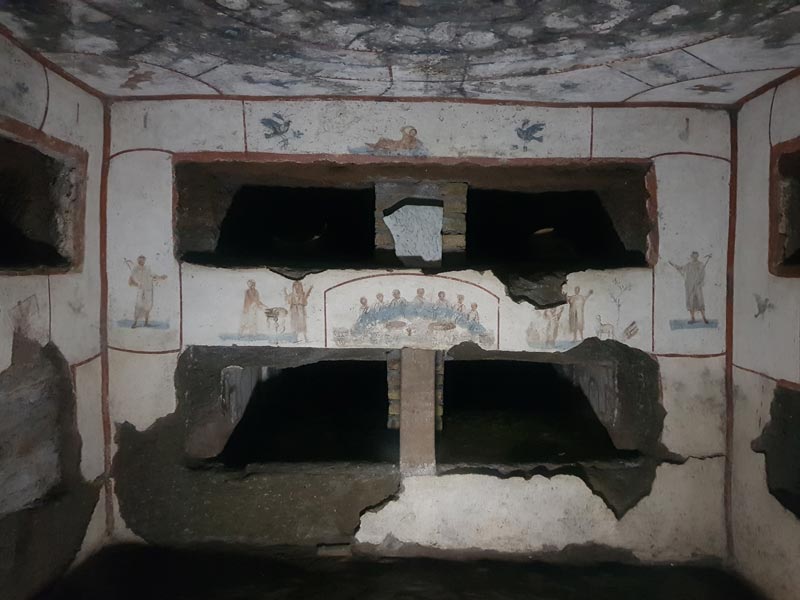The Catacombs of St. Callixtus
They are on the right of the Appian Way, after the church of "Quo Vadis?".
The catacombs of St. Callixtus are among the greatest and most important of Rome. They originated about the middle of the second century and are part of a cemeterial complex which occupies an area of 90 acres, with a network of galleries about 12 miles long, in four levels, more than twenty meters deep. In it were buried tens of martyrs, 16 popes and very many Christians.

In the open area are two small basilicas with three apses, known as the "Trichorae". In the Easter one were perhaps laid to rest pope Zephyrinus and the young martyr of the Eucharist, St. Tarcisius.
The underground cemetery includes several areas. The area of the Popes is the most important and venerated crypt of the cemetery, called "the little Vatican" as it was the official burial place of nine popes and, probably, of eight dignitaries of Rome's 3rd century Church. In the walls you can still see the original inscriptions, in Greek, of five popes. On four tombstones, near the name of the pope, there is the title of "bishop", since the Pope was regarded as the head of the Church of Rome, and on two of them there is the Greek abbreviation of MPT for "Martyr".
The Crypt of St. Cecilia: the popular patron saint of music. Of a noble Roman family, she was martyred in the 3rd c. and entombed where the statue now lies.
She was venerated in this crypt for at least five centuries. In 821 her relics were transferred to Trastevere, in the basilica dedicated to her.
The statue of St. Cecilia is a copy of the celebrated work sculptured by Stefano Maderno in 1599.
The crypt was all covered with mosaics and paintings (beginning of the IX Century). On the wall, near the statue, we see an ancient painting of St. Cecilia in an attitude of prayer; lower down, in a small niche, is a fresco representing Christ holding a Gospel. On the right side is the figure of St.Urban. On the wall of the shaft is the painting of three martyrs: Polycamus, Sebastian and Quirinus.
Passing through imposing galleries full of loculi, we reach five small chambers, truly family tombs, commonly known as the cubicles of the Sacraments, and particularly important for their frescoes.
The frescoes can be dated to the beginning of the III century and represent symbolically the sacraments of Baptism and of the Eucharist. We find depicted also the prophet Jona, a symbol of the resurrection.






